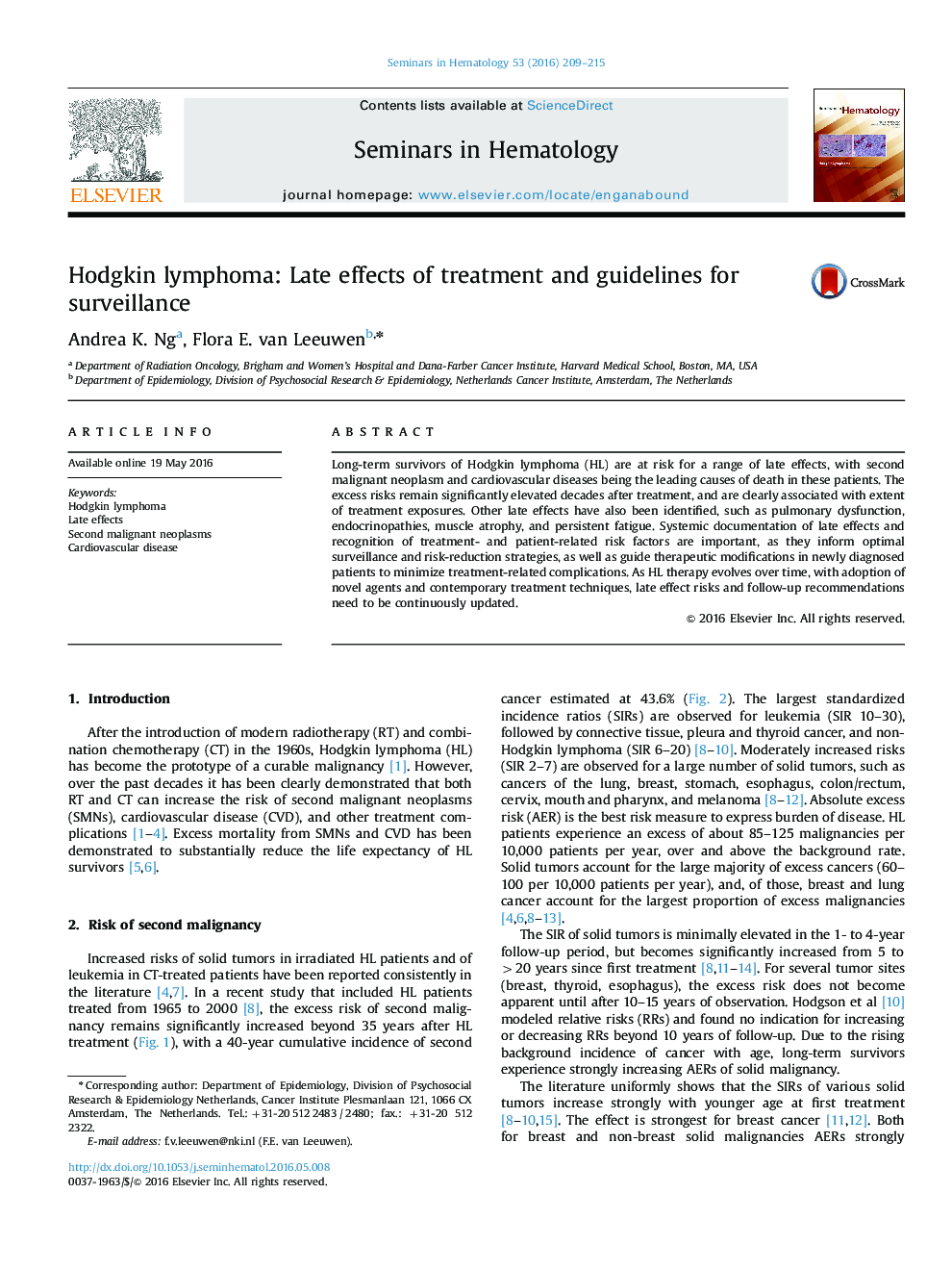| Article ID | Journal | Published Year | Pages | File Type |
|---|---|---|---|---|
| 3333370 | Seminars in Hematology | 2016 | 7 Pages |
Long-term survivors of Hodgkin lymphoma (HL) are at risk for a range of late effects, with second malignant neoplasm and cardiovascular diseases being the leading causes of death in these patients. The excess risks remain significantly elevated decades after treatment, and are clearly associated with extent of treatment exposures. Other late effects have also been identified, such as pulmonary dysfunction, endocrinopathies, muscle atrophy, and persistent fatigue. Systemic documentation of late effects and recognition of treatment- and patient-related risk factors are important, as they inform optimal surveillance and risk-reduction strategies, as well as guide therapeutic modifications in newly diagnosed patients to minimize treatment-related complications. As HL therapy evolves over time, with adoption of novel agents and contemporary treatment techniques, late effect risks and follow-up recommendations need to be continuously updated.
